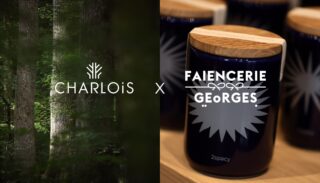December in the cellar
22 December 2020
In 1910 in December, cellar work was marked by racking (or breaking), the use of grape marc and cellar maintenance and cleaning work.
Here is what can be read in the Wine Trade Directory in 1910 :
Breaking – For some wines, it is customary at this time to perform a first racking or breaking the purpose of which is to separate the wine early from its big dregs. This should only be done when the temperature is downright cold and when the impurities are not in suspension in the liquid. As with ordinary withdrawals, we will operate in the absence of air. For white wines this practice is very good, because often the diseases which affect them can be attributed to too prolonged contact with the large lees. Fat and yolk are frequently the consequence. This breaking must be done with the greatest care and the wine must be left in the cellars; Taking it into the cellar would be a great mistake, because the cold December and January arriving just in time to promote clarification, it is better to use the help of these external agents.
Use of the marcs – The marcs from the harvest will be used either to extract the tartar or for distillation. The marc which one proposes to preserve must be separated from all its sour or moldy parts packed in barrels where one refills with wine or alcoholic water 10 °, then one removes the barrels and one them. closes tightly. The marc that you want to distill immediately must be crumbled out of the press, without waiting until it has been exposed to the air.
Miscellaneous – When tasting a new wine one recognizes that the insensitive fermentation and the release of carbonic acid have ceased, the barrels or casks will be closed by bouncing and pushing the hatches. The cold winter will do the rest. We will continue the surveillance and the toiling.
The behavior of new wines will be carefully examined from the point of view of the microbial diseases which may affect them.
Old wines will be visited as usual; we will take care not to approach it with new wines which could, by their ferments, disturb the rest of older products.
The vats and cellars where all harvesting work will be completed must be restored, cleaned, sanitized by the means already indicated and by sulfurization, an excellent means of disinfection.
Nowadays in December
Pestering is still happening. Indeed, removing most of the lees after fermentation helps prevent certain organoleptic deviations or microbiological deterioration in the wines. If necessary, fine lees can be left, which will bring roundness and will change the aromatic profile of the wines during aging in vats or barrels.
The marc is also used to produce industrial ethanol, for drinking or for fuel. There are also other outlets for grape marc: we can cite the extraction of the tart as described above with the aim of using it in acidification of wines, or as a natural preservative in the food industry. It is also possible to extract anthocyanins, used as natural dyes, and phenolic compounds (tannins) also used in the food or cosmetic industry. The distilled marcs can then be transformed by the anaerobic digestion method in order to produce biogas, or finally be transformed into compost.
“Vineyard and cellar – 1910” is a series of articles that we present to you throughout the year 2020, month by month. The articles are taken from the 1910 “Wine Trade Directory” and describe the various works necessary for the grapes and wine production at the beginning of the 20th century.







